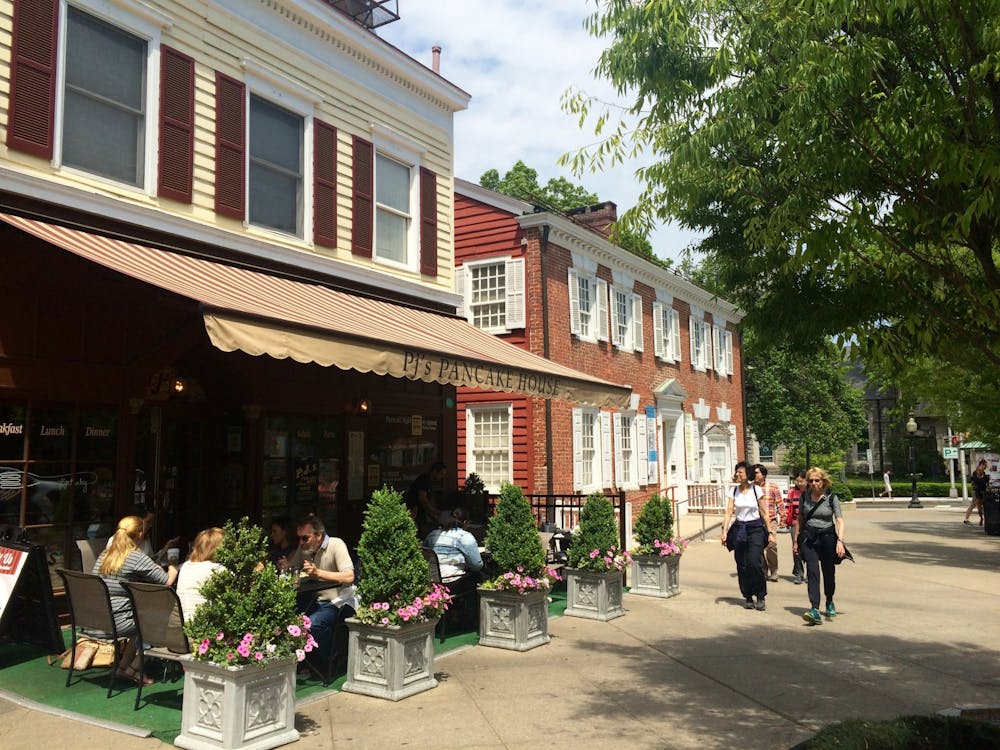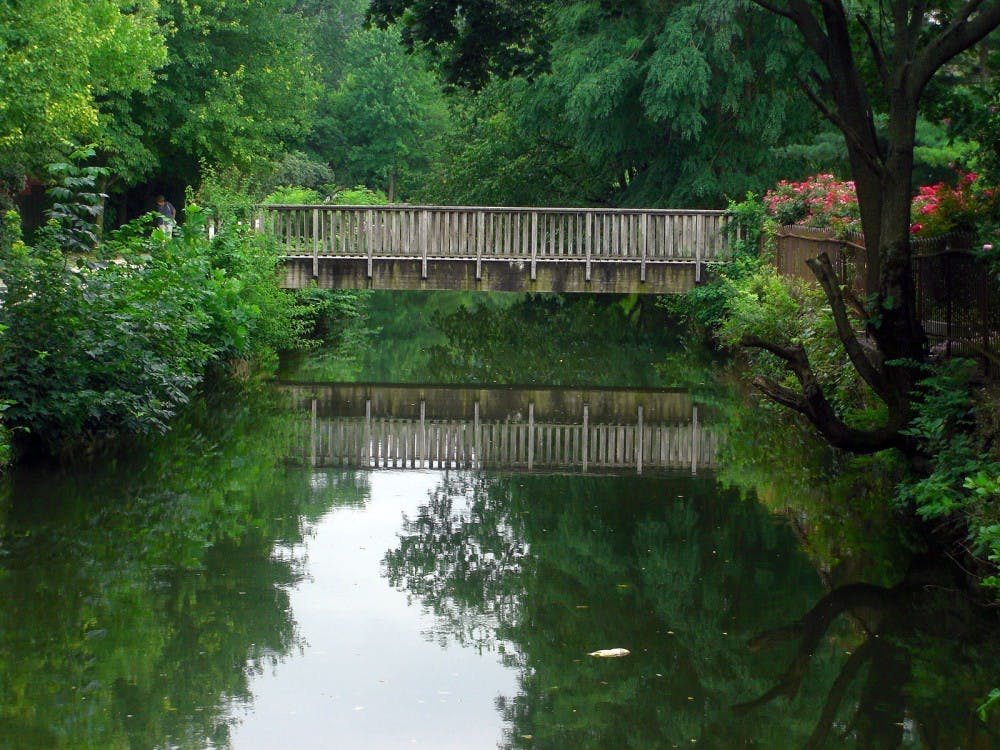Continuing a tradition, the Whitney Museum of American Art recently launched its 2004 Biennial Program. The exhibition, which will run through May 30, is a collection of works produced by 108 different artists and collaborators from more than 15 cities across the country between Sept. '01 and Sept. '03. In addition to the works shown inside the museum, the Biennial, through a partnership with the Public Art Fund, includes a series of outdoor works situated in Central Park.
The Biennial was organized by three of the Whitney's curators: Chrissie Iles, Curator of Film and Video; Shamim M. Momin, Branch Director and Curator; and Debra Singer, Associate Curator of Contemporary Art.
The three curators' mission was to survey a broad range of art produced by American artists within the last two years and select works that would collectively reflect what Singer described as an "intergenerational dialogue" in a slide lecture she gave at 185 Nassau Street last week. For the most part, the curators pursued their research independently; they traveled around the country, visited studios, followed independent agendas and met only a few times to discuss trends that had emerged. The resulting Biennial testifies to the enormous effort the curators devoted to this herculanean task.
The Biennial showcases many different types of media, including painting, drawing, film, photography, performance, sculpture, collage and room-size installations. As the catalogue states, the leitmotif of this Biennial is intergenerational dialogue inspired by the cultural climate of post-9/11 America. The three generations of artists whose work appears in the Biennial have developed a colorful and truly interesting set of themes that define modern culture. They include references to the political and popular culture of the late '60s and early '70s, interests in Gothic literature, psychoanalytic explorations of the unconscious, issues of school violence, awareness of warped space, the "remote immediacy" of technology and the mapping of an invented interior world. All are presented through various approaches to history, technology, abstraction, materiality, narrative and process.
Most importantly, however, in times of uncertainty, within a society that is facing unprecedented cultural, political and economic transitions, the 2004 Biennial is a way of grappling with modern fears not with escapist tactics, but rather by confronting the issues and dealing with them internally. Thus, many of the pieces have contracted a more materialistic approach to their construction in order to promote the intimate aura of the exhibition.
The first gallery of the Biennial addresses the relation between nature and culture. Erick Swenson's installation of a young buck ("Untitled") attempting to remove the velvet from its antlers by rubbing them against a fabricated oriental rug represents a poetic confrontation between man and nature. Cameron Martin's "Pure Phase Two" presents a polished, frozen landscape, a domesticated version of the natural world that alludes to the manner in which our engagement with nature is often modified by the models we see in magazines.
An absolutely enchanting work, "Fireflies on the Water" by Yayoi Kusama is an environment filled with lights. The bright specks that dance above, around and below dematerialize the confines of the room, lending it a feeling of complete isolation in infinite space. After waiting in line, each viewer is allowed 20 seconds alone in this space. The effect of standing on a narrow platform raised from the water that covers the floor, 150 small lights all around, produces a feeling that is almost ethereal. Kusama's work embodies a hallucinatory approach to the realities of space.
Another installation is Tom Burr's "Blackout Bar." Burr's work is associated with different treatments of postwar sculptural techniques; he uses Minimalism, land art, and site-specificity to shape his installations. His work conveys a mournful tone and addresses many social issues, including that of public versus private space. Even seemingly minute details in "Blackout Bar," such as the full ashtray, lend important insight into his work — the ashtray acts as a reference to the change of nonsmoking laws in New York.

In Olav Westphalen's "Statue (seated)," the artist portrays a three-dimensional image of an Enron executive sitting on a chair with his hands clasped behind his back. Westphalen's works are known for incorporating the cultural ludicrousness of modern-day society, current events and intellectual pretenses. This work is a perfect example of the influence of contemporary events on the works in the Biennial, how they have shaken the mold of society and become symbols that artists choose to utilize and manipulate in various mediums in order to simultaneously construct a message addressed to the future while deconstructing an event of the past.
Above all, the Biennial is not an environment that can be reconstructed on paper.
The Whitney Museum is located at 945 Madison Avenue and 75th Street. It is open Wednesday and Thursday, 11:00 a.m. to 6:00 p.m.; Friday 1:00 p.m. to 9:00 p.m. (6:00 p.m. to 9:00 p.m. pay-what-you-wish admission); and Saturday and Sunday 11:00 a.m. to 6:00 p.m. The museum is closed on Mondays and Tuesdays. For further information, view their website at www.whitney.org.








